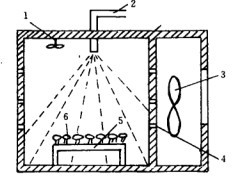Research Progress of Microwave Technology in Rapeseed Processing

ABSTRACT: As an efficient processing method, the application of microwave technology in rapeseed processing has attracted more and more attention. Microwave pretreatment before rapeseed pressing can significantly increase the content of polyphenols in rapeseed oil, the total amount of polyphenols can be increased by nearly 120 times, and the content of phytosterols and vitamin E in rapeseed oil can also be significantly increased. In addition, microwave drying equipment can also accelerate the degradation of glucosinolates. Compared with traditional fried seeds, microwave-treated rapeseed oil has more rich aroma.
Key words: microwave drying of rapeseed; rapeseed polyphenols; glucosinolates; vitamin E; sterols

Microwave is an electromagnetic wave with a wavelength ranging from 1 mm to 1 m and a frequency ranging from 300 MHz to 300 CHz. The microwave heating effect is different from the traditional heating method. When microwave heating, polar molecules inside the material polarize repeatedly, instantaneously transforming electromagnetic energy into heat energy. In the process of microwave heating, heat transfers from the inside to the outside of the material, which directly determines that microwave has the characteristics of fast heating speed, uniform heating, high energy utilization rate and strong heating selectivity. Since Williams studied accelerating chemical reaction by microwave in 1967, microwave technology has developed rapidly in the fields of biology, chemistry, agriculture, detection and analysis.
Rapeseed is an important oil crop in China. In 2013, the total planting area of rapeseed in China was 72 million hectares, and its output ranked first in the world, with 13.5 million tons. In recent years, the planting area and total yield of rapeseed have been increasing gradually. The application of microwave technology in rapeseed processing covers many links of rapeseed industry, such as prolonging the shelf life of Rapeseed by using Huibo drying technology; microwave pretreatment before rapeseed pressing can significantly improve the yield of oil, increase the flavor of oil, promote the decomposition of anti-nutrient factors, and improve the nutritional value of oil.
Microwave drying can effectively inhibit the germination, mildew and insect pests of rapeseed during storage by reducing the water activity and enzyme activity of rapeseed, and greatly improve the storage time of rapeseed. In addition to drying, rapeseed microwave can produce fat-soluble Canola, which is an important discovery in rapeseed processing by microwave technology. After microwave pretreatment, the content of Canola in rapeseed oil can be increased by 120 times. Microwave pretreatment can also significantly improve the yield of rapeseed oil and increase the migration ability of active substances such as vitamin E, phytosterols, phospholipids and pigments to oil.
The contents of vitamin E, phytosterols, phospholipids, pigments and total phenols in microwave rapeseed oil were higher than those in common cold pressed rapeseed oil, which had better nutritional and antioxidant activities. In addition, microwave pretreatment can also promote the thermal degradation of glucosinolates in rapeseed, improve the quality of rapeseed meal and the flavor of rapeseed oil. In summary, microwave, as an efficient and energy-saving processing method, is environmentally friendly and has broad application prospects in the field of rapeseed processing. It is also of great significance to the national economy and the health of the whole people.
But at present, the industrialization of microwave technology is not very popular. On the one hand, it is related to the lack of existing industrial microwave equipment and the excessive investment in the early stage. On the other hand, it is related to the psychology of producers and consumers. It is believed that microwave process produces radiation. We should treat wave technology rationally, because the existing technology can shield microwave radiation well and avoid exaggerating the effect of microwave radiation. In addition, the mechanism of Canolol transformation in microwave process is not clear. In the future, the material basis, pathway and conditions of Canolol formation in microwave pretreatment process need to be studied and elucidated in order to promote the transformation of sinapic acid and its derivatives to Canolol targeting.